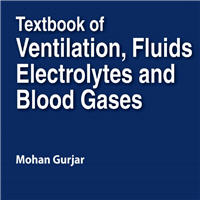Tag: hypovolemia
Textbook of Ventilation, Fluids, Electrolytes and Blood Gases
The Textbook of Ventilation, Fluids, Electrolytes and Blood Gases encompass essential topics for which thorough education and training is a must for any clinician who manages these patients. This book has four sections, each... read more

Septic Shock in the Prehospital Setting
Septic shock (SS) is a potential life-threatening condition in which an early identification and immediate therapy stand out as the main cornerstones to improve survival chance; in this context, emergency medical services... read more
UFNET Fluid Removal Strategy Secured by Hemodynamic Monitoring vs. Standard of Care in patients with CRRT
An early and active UFNET strategy secured by an advanced hemodynamic protocol using dynamic indices of preload dependence had the capacity to control H72 FB in an ICU population of patients with acute circulatory failure,... read more
Using Diuretic Therapy in the Critically Ill Patient
Diuretics are routinely prescribed in critically ill patients but significant variation in practice exists. In this article, we summarize current data relevant to diuretic prescribing. What are the indications for diuretics... read more
Hemodynamic Management Challenges of Septic Shock
Sepsis is one of the main causes of admission to the Intensive Care Unit (ICU). It is defined as a life-threatening organ dysfunction, caused by dysregulated host response to infection (Singer et al. 2016). Septic shock... read more
Acute Kidney Injury Related to Intoxication From Synthetic Cannabis
Acute kidney injury (AKI) occurs infrequently in young patients and often raises concern for irreversible or deadly etiologies. However, AKI related to synthetic marijuana, colloquially known as K2, is an increasingly common... read more
Severe Hyponatremia Management with DDAVP Clamp-Bolus Technique
The DDAVP clamp technique has considerably simplified the management of severe hyponatremia. The DDAVP clamp was a substantial step forwards in the management of severe hyponatremia. It eliminated a lot of the variability... read more
Mythbusting: (Empty IVC + Hyperkinetic Heart) Does Not Equal Volume Depletion
An empty IVC and hyperkinetic heart does not equal volume depletion. This combination of echocardiographic findings may result from either vasodilatory shock (as illustrated above) or hypovolemic shock. If encountered in... read more
The Relationship Between Heart Rate and Body Temperature in Critically Ill Patients
In critically ill patients, increased metabolic demand results in increased cardiac output. Increased heart rate in these patients can also be secondary to other conditions such as hypovolemia, heart failure, anxiety, or... read more
ED Evaluation and Management of Non-Obstetric Abdominal Pain in the Pregnant Patient
A 27-year-old G4P2 female at 25-weeks gestation presents to the emergency department with right upper quadrant abdominal pain. The pain began yesterday and was initially a generalized discomfort that localized to the right... read more
Microtools to Identify and Resuscitate Microcirculatory Dysfunction in Critically Ill Patients
Despite recent advances in the timely restoration of impairments in the oxygen supply chain to the tissue (Yealy et al. 2014; Peake et al. 2014; Mouncey et al. 2015), circulatory shock remains a major contributor to mortality... read more
Validation of a Point-of-Care Capillary Lactate Measuring Device
Lactate Pro 2 had good agreement with the reference method using arterial blood but poorer agreement using venous blood. Our results show the potential for overestimation of the lactate values in haemodynamically compromised... read more
AKI in Critically Ill Patients with COVID-19
Acute kidney injury (AKI) has been reported in up to 25% of critically-ill patients with SARS-CoV-2 infection, especially in those with underlying comorbidities. AKI is associated with high mortality rates in this setting,... read more
WHO Guidelines Regarding Fluid Administration for Coronarvirus Are Dangerously Misguided
Portions of the current WHO guidelines regarding fluid management are dangerously misguided. The first two recommendations suggest limiting fluid administration in patients with ARDS and patients who aren't shocked, to... read more









